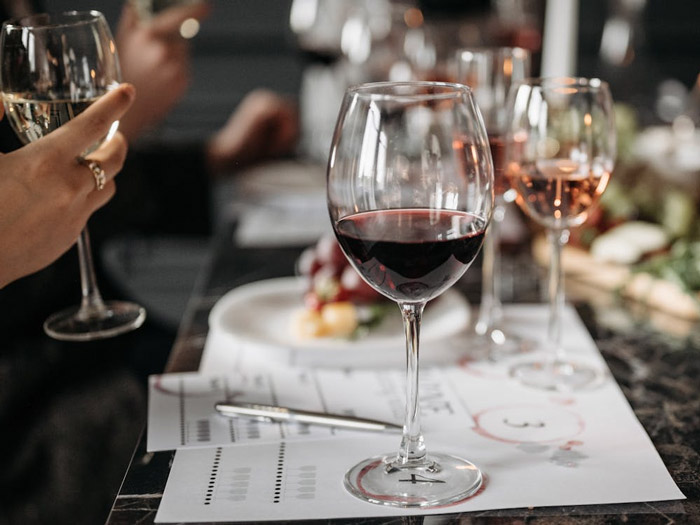Wine, like a work of art shaped by time, carries the essence of aging and the craftsmanship of winemakers. However, improper storage can turn this liquid treasure into a “landmine,” ruining the tasting experience in an instant. Have you ever opened a bottle only to be confused by strange aromas and an unpleasant sour taste, unsure whether it’s the wine’s unique character or a sign of spoilage? Don’t worry—this guide will decode the mysterious signals of spoiled wine from visual, olfactory, and taste perspectives, along with scientific insights. We’ll also share practical storage tips to help you avoid “faulty bottles” and savor every drop of wine’s richness and fragrance.
1. Visual Inspection: The “Appearance Code” of Wine
A wine’s appearance is like a silent diary, revealing its condition. Careful observation can uncover clues about whether it has spoiled.
1.1 Color Changes: A Warning from Time
While wine naturally evolves in color over time, certain unnatural shifts can signal spoilage.
– White Wine: If it transitions from a bright lemon hue to a deep amber or brown—like an oxidized apple—it’s likely over-oxidized.
– Red Wine: A shift from purple-red to brick-red at the edges is normal with aging, but a cloudy orange-brown tint suggests spoilage.
– Sparkling Wine: If the bubbles fade quickly and the wine loses its luster, it may no longer be drinkable.
1.2 Sediment: The Line Between Normal and Abnormal
Sediment isn’t uncommon, but distinguishing harmless deposits from spoilage is key.
– Normal Sediment: Tartrate crystals (tiny white grains) or tannin clusters (common in aged reds) are harmless and even signs of maturation.
– Dangerous Signs: Floating mold, haze, or murkiness may indicate microbial contamination or bottling defects—best to avoid.
2. Olfactory Alerts: The “Red Flags” of Off-Putting Aromas
Your nose is the most sensitive tool for detecting spoiled wine. Watch out for these warning scents:
2.1 Musty Smell: The Shadow of TCA Contamination
A damp cardboard or moldy basement odor often points to TCA (2,4,6-trichloroanisole), a cork taint that strips wine of its fruitiness. If the smell lingers after 15 minutes of opening, the wine is likely ruined.
2.2 Vinegary Sharpness: Volatile Acidity (VA)
A strong vinegar or nail polish remover scent means high volatile acidity from acetic bacteria converting alcohol into vinegar. While some VA adds complexity (e.g., Amarone), excessive amounts make the wine harsh.
2.3 Rotten Notes: Reduction Gone Wrong
Cooked cabbage, rotten eggs, or sulfurous odors stem from reduction (lack of oxygen). Try decanting or swirling to aerate the wine. If the stench persists beyond an hour, the wine is likely unsalvageable. Other off-putting smells (soy sauce, medicinal notes) also indicate spoilage.
3. Taste Test: The Final Judgment
If sight and smell raise doubts, taste confirms them.
3.1 Flat Acidity: A Lifeless Sip
Spoiled white wines often lose their vibrant acidity, tasting dull like sugary water. (Note: Natural wines may intentionally retain some cloudiness—context matters.)
3.2 Harsh Bitterness: A Disjointed Body
A burning, bitter aftertaste with overpowering alcohol suggests heat damage from improper storage, stripping the wine of its elegance.
3.3 Dead Bubbles: A Sparkling Wine’s Worst Nightmare
If bubbles vanish rapidly, accompanied by a metallic tang, the seal likely failed, ruining the effervescence and flavor.
4. Science Perspective: “Fake” vs. Real Spoilage
Not all seemingly flawed wines are undrinkable—some are misunderstood.
4.1 Mild Oxidation: A Graceful Aging Effect
Nutty or dried mushroom notes in aged wines (e.g., Sherry) are normal. If the finish retains fruitiness, the wine is safe.
4.2 Harmless Crystals: Tartrates Are Innocent
Tartrate crystals (common in chilled whites) don’t affect quality—just filter and enjoy.
4.3 “Bottle Shock”: A Temporary Slump
Young, tannic reds (e.g., Bordeaux, Barolo) may shut down after travel. Let them rest or decant; they’ll often rebound.
5. Prevention Tips: Extending Wine’s Lifespan
Proactive care beats regret. Here’s how to preserve your wine:
5.1 Temperature Control: Steady & Cool
Store wine at 12–18°C (54–64°F)—avoid kitchens or fridges (unless short-term). Stable temps prevent premature aging.
5.2 Darkness & Horizontal Storage: UV’s Enemy
UV light accelerates oxidation. Keep bottles in the dark, and store cork-sealed wines sideways to keep the cork moist.
5.3 Vacuum Sealers: Post-Opening Savior
Opened wine? Use a vacuum pump to slow oxidation:
– Whites: 3 days
– Reds: 5 days
– Sparkling: Use a specialty stopper to preserve bubbles.
Final Thought: Turn Suspicion into a Learning Opportunity
Next time you encounter a questionable bottle, treat it as a sensory masterclass. Note its color, aromas, and taste to refine your judgment. Every flawed wine is a lesson, deepening your appreciation for the next perfect pour.
Here’s to exploring wine’s wonders—one sip at a time! 🍷

